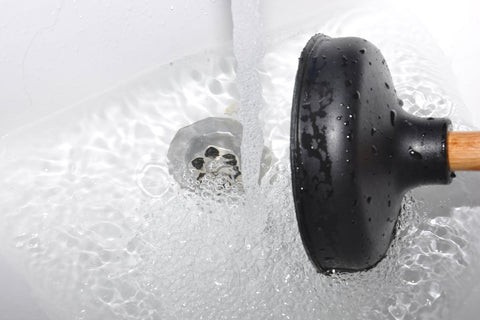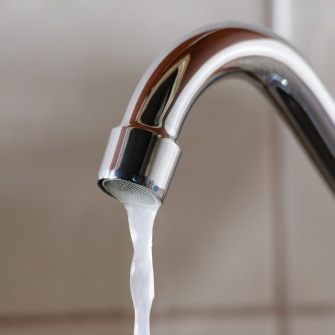The Ultimate Guide: Five Winterizing Techniques to Avoid Pipe Bursts in Chilly Conditions
The Ultimate Guide: Five Winterizing Techniques to Avoid Pipe Bursts in Chilly Conditions
Blog Article
We have discovered this great article pertaining to How to Prevent Frozen Pipes down the page on the web and thought it made good sense to talk about it with you over here.

All homeowners that live in temperate climates must do their ideal to winterize their pipelines. Failure to do so can mean calamity like icy, fractured, or ruptured pipelines.
Try a Hair Clothes Dryer or Warmth Weapon
When your pipelines are practically freezing, your reliable hair dryer or heat weapon is a blessing. If the warm towels do not aid displace any kind of settling ice in your pipes, bowling hot air straight right into them may assist. You may finish up destructive your pipes while trying to melt the ice.
Open Up Cupboard Doors Hiding Plumbing
It would certainly be practical to open cupboard doors that are masking your pipes when it's cool outside. They could be somewhere in your cooking area or washroom. This will permit the warm air from your heating system to circulate there. Therefore, you avoid these subjected pipelines from freezing. Doing this small method can maintain your pipes warm and limit the potentially hazardous outcomes of freezing temperatures.
Require Time to Cover Exposed Pipeline
One clever as well as very easy hack to heat up freezing pipelines is to wrap them with cozy towels. You can cover them initially with towels. After safeguarding them in place, you can put boiling water on the towels. Do it slowly to allow the towels take in the fluid. You can likewise make use of pre-soaked towels in hot water, simply don't neglect to wear safety handwear covers to secure your hands from the warm.
Switch on the Faucets
When the temperature declines and it seems as if the freezing temperature level will certainly last, it will certainly aid to transform on your water both inside and also outdoors. This will certainly maintain the water moving with your plumbing systems. You'll finish up losing gallons of water this means.
Turn off Water When Pipelines are Frozen
Turn off the major water valve right away if you see that your pipelines are completely icy or almost nearing that phase. You will generally locate this in your cellar or laundry room near the heater or the front wall closest to the street. Turn it off as soon as possible to avoid further damage.
Don't forget to close exterior water resources, too, such as your hookup for the garden house. Doing this will protect against additional water from filling your plumbing system. With more water, more ice will stack up, which will ultimately lead to burst pipelines. If you are uncertain about the state of your pipes this wintertime, it is best to call a specialist plumber for an assessment. Taking this proactive strategy can conserve you countless dollars in repairs.
All home owners that live in pleasant environments need to do their ideal to winterize their pipelines. Failing to do so can mean disaster like icy, split, or burst pipes. If the warm towels do not aid dislodge any kind of settling ice in your pipes, bowling hot air directly right into them might help. Turn off the primary water shutoff promptly if you discover that your pipelines are entirely frozen or virtually nearing that phase. With even more water, more ice will load up, which will ultimately lead to break pipelines.
PREVENT YOUR PIPES FROM FREEZING THIS WINTER
A Leading Cause of Property Damage
When the weather is taking a deep nose dive into the cold dreary days, the risk of your pipes freezing and potentially bursting skyrockets. Unfortunately, during these cold dreary months, burst pipes are the most common denominator for property damage. The pipes that are most at the risk are those that are in areas where it is most cold in your home. For instance, pipes located in interior places such as basements, attics, and your garage. Unfortunately, that doesn’t mean that the pipes running through your cabinets or exterior walls can’t freeze. Good news, however, is that you can do things to help prevent pipes from freezing.
How to Prevent Pipes From Freezing
Once the temperature starts to drop during the winter, you should be taking the proper measures needed to ensure that your pipes stay warm and that there is circulation of water through them. Some steps that experts may recommend could go against your better judgement when it comes to saving water and heat. However, it would go without saying that when expenses are compared, damaged pipes could put a bigger dent in your wallet than a water bill.
What Can I Do?
Keep your garage door closed. This is very important, especially if you have water supply lines running through your garage. Open your kitchen and bathroom cabinets to allow warm air to circulate through them. Allow air circulation throughout your home. Keeping the interior doors open will once again allow the warm air to circulate inside your home. Ensure your thermostat is running the same temperature throughout the night and day. If you plan to be away from home during the cold months, set your temperature no lower than 55° F. This should provide enough heat to keep the pipes warm and prevent any remaining water inside the pipes from freezing. For more of a long-term solution, add insulation to attics, basement, and other crawl spaces around your home. By allowing your faucet to drip, it will alleviate pressure in the system. This is important because the pressure that is created between the blockage and the faucet can potentially cause the pipes to burst. Allowing the faucet to drip will prevent the pressure from building up, therefore keeping the pipes from bursting. Seal any cracks, openings, and crawl spaces around your home to prevent cold air from coming inside. This keeps your pipes-not to mention your home-warmer and less susceptible to issues caused by freezing temperatures. For the pipes in your home that are easily accessible, applying electrical tape to them might prevent them from freezing over. This is a quick fix, as you can apply the tape directly to the pipe. There are two options for heating tapes. One turns on and off by itself when it senses heat is needed. The other type of heating tape needs to be applied when heat is needed and removed when not necessary. If you have exposed pipes in your home, you can check this website to take a look at a few options that would be available at a shop near you.

I'm certainly very interested by How to Prevent Frozen Pipes and I really hope you appreciated the new blog entry. Sharing is nice. You just don't know, you could be doing someone a favor. I recognize the value of reading our article about How to Prevent Frozen Pipes.
Pro assistance? Dial. Report this page